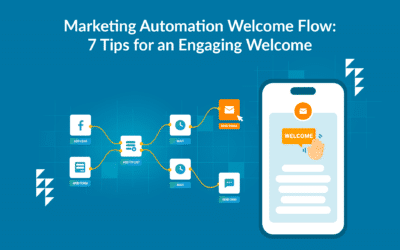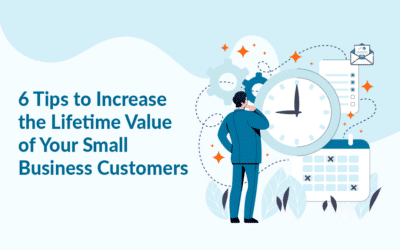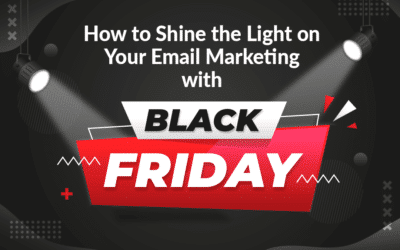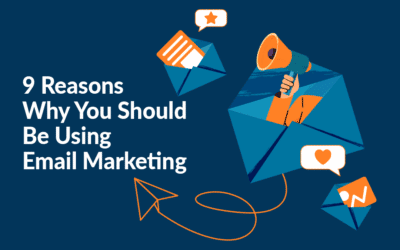Email marketing is arguably the most cost effective and efficient marketing channel available to your business, regardless of company size or area of business. Done well it speaks volumes for you as a brand, can nurture leads, build loyalty, and have a significantly positive impact on your bottom line.
But whilst email marketing isn’t an artform or a science, it can sometimes feel like it’s a little tricky to get the best out of it as a channel.
So, in this article we’ve gathered a handful of tried and tested tips and tricks to help you keep your email marketing campaigns sparklingly effective.
Let’s get what should the most obvious, very basic, point out of the way first…
“You can’t have egg, bacon, spam and sausage without the spam” – Monty Python
NO!
DON’T SPAM!
EVER!
Seriously, we mean it. Not only will it get you permanently banned from MarketingPlatform (and indeed any other reputable marketing platform), it will destroy your reputation and ultimately ruin your business.
Of course, this will seem patently obvious to any responsible, sentient marketer, so why the emphasis here?
Well, because it actually leads neatly into our first vital tip…
1: Understand your audience – really understand them…
It is easy to assume you know your audience. They’ve subscribed for updates from you after all. But making this assumption whilst not fully appreciating who they are and what matters to them is the first step on a slippery slope that can end up with you, entirely unintentionally, becoming perceived as a spammer.
If your contact list is beginning to see significant unsubscribe rates, low CTR, and minimal conversion rates, whilst other potential causes could be having an effect, it is also time to honestly assess how well you really understand “your people”, their wants and needs, and how you are answering them.
To avoid this, right from the moment of your first contact with a potential customer, take the time and opportunity to introduce your brand, but critically, give them the chance to introduce themselves and what they are looking for from you.
As we explore in our article on developing an Online Marketing Strategy, engage with your audience and learn things about them such as:
- When and how they want to hear from you
- How they want you to address them
- What distinguishes them from the general populace
- How these differences make them particularly suited as a customer for your business
These last two are areas of understanding that will grow and deepen with time, that’s the beauty of good email marketing – the ongoing conversation.
Don’t try to do it all in one go, that’s just not possible. Instead, frame your approach to the relationship you build with your customer in these terms and you will by default set yourself up for success.

2: Dare to make mistakes
If you are not already doing so, you should seriously consider embracing the willingness to get things wrong as much as getting them right – and not just with email marketing!
Why?
Because we’re human, and be honest, we all did that thing our mother told us not to do, didn’t we?
It’s how we learn as a species, and that’s precisely how we become better versions of ourselves.
Email marketing allows you to do this in a secure, structured and well-informed way – with A/B testing. Don’t assume that because something is working now that it will always do so. Experiment with every aspect of your emails but be sure to only test one aspect of each mail at a time, and make sure your test sample size is large enough to produce meaningful responses.
Make A/B testing a habit, a default setting with all your campaigns. It will keep you on your toes, it will very probably surprise you, but most of all it will make sure that you are always sending out communications that work for your audience.
This segues neatly onto our next tip…
3: Quality not quantity
It really isn’t about how often you communicate, but how well.
This reflects back to our very first point about spam, don’t confuse effectiveness with frequency. Sending out communications too often will very likely only end up turning your audience against you – causing them either to unsubscribe, or worse, chip you into the spam sand-trap you so desperately want to avoid.
Make your communications work for you, measure their effectiveness, and always remember you are having a conversation – use your data to make the content relevant and truly meaningful for your individual recipients.
4: Experiment and test for sure, but also, be consistent
Whilst it is important to experiment and test to ensure your messaging is working, it is also vital not to do so in a way that disrupts your brand. A huge part of building trust with your audience is being recognisable.
Your email campaigns should seamlessly reflect your brand in line with your website, any social media presence you have, as well as with video content and printed materials you may have. However it is that your audience move through your touchpoints they always need to confident of where they are and with whom they are talking.
5: About that data…
You don’t have to measure everything for it to be meaningful. What metric or metrics you choose to regard as relevant in each case will be dictated by the purpose of your specific email campaign.
If your mail is a new product offer or a discount to move old stock for instance, clicks, visits and conversions are the things to focus on, whereas a mail containing relatively simple information which is contained within the mail itself will more likely have opening rate as the metric of greatest importance.
Always see your communication in context, and measure accordingly.
6: “And I would like to thank the Academy…”
Just as our mothers tried hard to teach us not to do things that hurt us, they also taught us to say “thank you”.
Don’t go over the top but do be sure to thank your audience at the right times, from their initial sign-up, through to any responses or actions they subsequently take as part of your ongoing conversation.
Be polite. Be gracious and show your appreciation of what your audience means to you. It really does make all the difference.
And whilst we’re on the subject…
7: Give your gratitude some genuine value…
If you’re getting it right, you will be able to identify that part of your audience that are seriously engaged with your communications – and those of your contacts that are consistently opening, clicking and possibly even sharing your campaigns really deserve some recognition for their loyalty.
Talk to them, let them know you have noticed them, ask them for their opinions on your campaigns – what it is that you’re doing right, and what they feel you could improve.
These are your brand ambassadors, and you should treat them as such. They are a part of your brand now, so of course, you can reward them with targeted VIP special offers and discounts, but reaching out to them first, and showing them that you are really paying attention and that their opinion really counts will only act to bring them even closer to you.
More than that, their engagement will provide you with invaluable insights, and only act to make your content even more compelling in the future.

8: Don’t take unsubscribes personally
Seriously. They’re only a perfectly natural part of any email marketing communication process. They are always going to happen, and they are not the end of the world.
Purely as a metric, and taken in conjunction with other relevant measurements, they can act as an early warning signal and offer you the chance to both learn from your mistakes and optimise your messaging to mitigate them.
What is absolutely vital however, is that your unsubscribe process is crystal clear and totally straightforward – and critically, it is an instant one-click action.
Put any barriers in the way of this and you will, again, find yourself consigned to the dystopian wastes of the spam folder.
9: Keep it clean…
Whilst we are discussing it, unsubscribes are not the only way people will let you know they are not interested in your content. You will also find that many recipients on your contact list will just ignore you completely.
Again, it’s nothing personal, but it is harmful to your delivery rates and sends a message to ISPs that you could well be sending unwanted mail.
You really don’t want this, so assuming you have tried and exhausted the strategies we explore in our article on Win-Back Strategies, you should build some time into your schedule, 2-4 times a year, to remove subscribers that haven’t opened your email campaigns for 2-3 months.
This simple process will keep your list in tip-top health, and can be done without worrying, because they’re really not coming back…
10: Oh, about that data again…
Clearly, any article offering email marketing tips and tricks would be remiss if it neglected touching on personalisation.
In our articles about Creative Segmentation and Marketing Automation<span< a=””> style=”font-weight: 400;”> we go into greater depth about putting your data to work. But we do need to mention here how essential it is not to overlook its usefulness – because ALL of your data matters when entering into a genuine one-to-one conversation.</span<>
Everything you measure about a recipient’s behaviour will help you craft ever more relevant communications for them, and using tools that populate your emails dynamically will ensure that your messaging become ever more meaningful to each individual member of your audience.
Wrapping it up for now…
There are many other tips that we will examine and share in later articles, but you could do a lot worse than putting these tips and tricks to work for you.
Focusing on building a viable online marketing strategy that centres on truly understanding your audience, whilst daring to be different but consistent, and which always delivers relevant, quality content for that audience as a result will go a long way to making a huge, positive, impact on your bottom line.
And we really do mean it about the spam…
Try MarketingPlatform for free for 14 days
The trial period is free, completely non-binding and expires after 14 days if you do not wish to continue.
When you sign up, you will also receive our educational flow via a series of emails along with our newsletter with regular updates.





